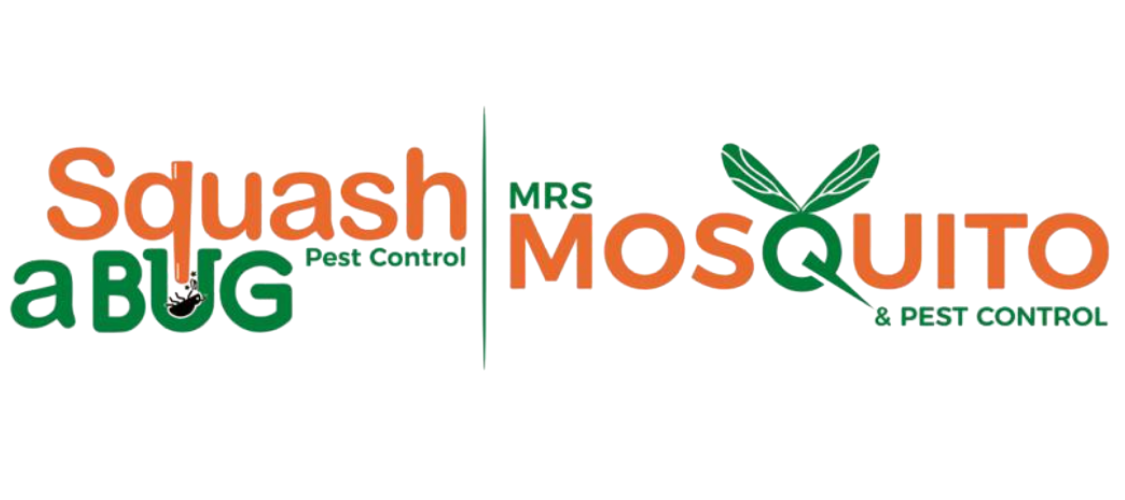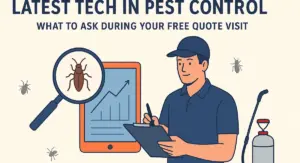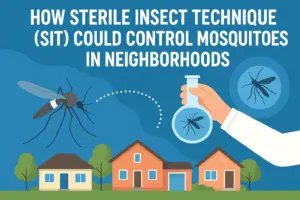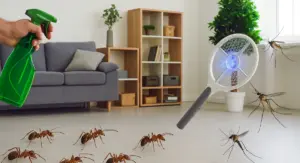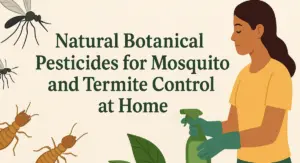If you’ve ever seen a cockroach dart across your kitchen floor, you know how unsettling it can be. Cockroach bait is one of the most common tools people use to deal with infestations. But when you have small children or pets at home, the decision to use bait becomes more complicated. Is cockroach bait pet safe? Can it harm kids? Or are there better alternatives for natural cockroach control and child-safe pest solutions?
These are real concerns for families across the U.S., especially in regions where pests thrive year-round. While cockroach control is essential for health and hygiene, safety should always come first. Whether you’re dealing with seasonal pests or trying to maintain a pest-free home, here’s what you should know about cockroach bait safety, especially around little ones and furry friends.
What Is Cockroach Bait and How Does It Work?
Cockroach bait usually comes in gel, station, or powder form. It contains food that attracts roaches and a slow-acting insecticide. The idea is simple: the roach eats the bait, returns to its nest, and spreads the poison to others. Over time, this can reduce and eventually eliminate an infestation.
Baits are favored because they’re effective and less invasive than sprays. They’re placed strategically in areas where cockroaches are active, often behind appliances, under sinks, or inside cabinets.
But here’s the issue: pets and kids are naturally curious. A peanut butter-scented bait or a small plastic station may seem like a toy or treat. And that’s where safety concerns begin.
Is Cockroach Bait Pet Safe?
Most cockroach baits are labeled as low-toxicity to mammals, which technically includes dogs and cats. The insecticides used in baits (like fipronil or hydramethylnon) are harmful in high amounts but are usually present in very small quantities in consumer products.
Still, small doesn’t mean harmless. Dogs, especially puppies, may chew on bait stations. Cats might bat them around. If your pet ingests multiple bait units, or if your pet is small in size, there’s a higher risk of illness.
Here are some symptoms to watch for if you suspect bait ingestion:
- Vomiting
- Drooling
- Lethargy
- Diarrhea
- Loss of coordination
If you notice any of these signs, contact your vet immediately.
For those with pets, it’s always better to err on the side of caution. Consider using natural cockroach control methods or pest-specific services like residential pest control that use safer alternatives.
What About Kids? Is Cockroach Bait Child-Safe?
Children under five are especially vulnerable. Toddlers often explore the world by putting things in their mouths. While bait stations are designed to be tamper-resistant, they are not foolproof. Some children have strong enough hands to break them open. Others might just chew on them or touch the gel and then eat a snack without washing their hands.
The ingredients inside cockroach baits aren’t meant to harm children in small doses, but they’re not harmless either. A large enough exposure could lead to nausea, upset stomach, or worse.
For safer results, store bait stations in areas completely out of reach of children—such as behind appliances or inside locked cabinets. Better yet, consider child-safe pest solutions that avoid using toxic substances altogether.
Safer Alternatives: Natural Cockroach Control
If you’re hesitant to use chemical baits, there are natural alternatives worth exploring. These may not wipe out a large infestation overnight, but they help control the population without risking your family’s health.
Some effective options include:
- Diatomaceous Earth: A natural powder that damages cockroach exoskeletons. Safe for humans and pets when used correctly.
- Boric Acid: Less safe if ingested but effective in small amounts and can be placed in areas inaccessible to pets and children.
- Bay Leaves, Cucumber Slices, or Citrus Peels: Cockroaches tend to avoid these scents.
- Essential Oils: Peppermint oil, tea tree oil, and eucalyptus can help repel cockroaches.
Pair these methods with good sanitation, sealing cracks (as outlined in common rodent entry points), and regular inspections to reduce the need for chemical baits altogether.
Keeping Your Home Safe and Roach-Free
Prevention plays a big role in keeping cockroaches out of your home. Roaches are attracted to food scraps, moisture, and clutter. Taking a few steps can make your home far less inviting:
- Wipe down counters daily
- Store pet food in sealed containers
- Fix leaky pipes
- Avoid leaving dishes in the sink overnight
- Use trash cans with tight lids
Seasonal pest activity also plays a role. In warmer states like Georgia or Florida, summer months bring out more pests. As explained in this guide on summer pest threats, taking proactive steps in peak seasons can prevent infestations before they begin.
The Role of Professional Pest Services
DIY methods are helpful, but they’re not always enough. If you’ve tried baits, traps, and cleaning, and the roaches keep coming back, it might be time to call a professional.
Many pest control companies now offer family-friendly solutions. For example, some services use integrated pest management techniques that rely on a mix of natural deterrents and targeted treatments. Professionals also know where to look for nests and entry points, something that’s hard to do without experience.
In environments like restaurants or hospitals, safety regulations make pest control even more complex. If you’re managing a business, this guide on pest-free hospitality tips can help ensure safety and compliance.
FAQs About Cockroach Baits and Home Safety
Can my dog get sick from eating a cockroach that consumed bait?
Very unlikely. The amount of insecticide a cockroach carries is minimal. However, it’s best to monitor your pet and consult a vet if you’re concerned.
Are natural roach repellents effective on their own?
They work best as part of a larger strategy, especially when combined with cleanliness and sealing entry points.
How long does cockroach bait remain active?
Most baits are effective for about 3 to 6 months. However, if they dry out or get contaminated, they stop working sooner.
Where should I place bait stations if I have pets?
Choose locations your pets can’t access, like behind the fridge, under the stove, or inside child-locked cabinets.
Can I use cockroach bait and natural remedies together?
Yes, but keep them in separate zones. For example, use bait in high-traffic roach areas and natural repellents near pet zones.
Final Thoughts
Cockroach baits can be an effective way to manage infestations, but they come with risks—especially if you have pets or kids. Thankfully, there are plenty of child-safe pest solutions and natural cockroach control methods available today. Whether you use store-bought products or enlist professional help, safety should always be a priority.
For persistent problems, exploring expert services can make a difference. Families who want long-term protection often benefit from scheduled treatments, as highlighted in this seasonal pest control calendar that aligns pest prevention with local conditions.
In the end, a mix of awareness, prevention, and smart choices can keep your home both pest-free and safe for every family member—two-legged or four-legged.
